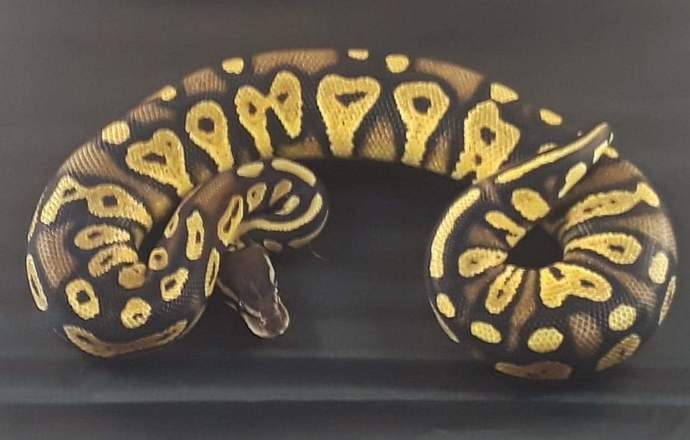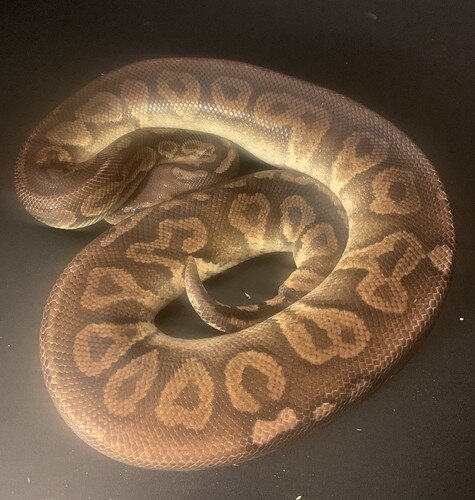I’d like to learn more about the red and ringer genes. I’m wondering how they are inherited? I know what each does in a black head, but are they visually identifiable in a normal (if so, how)? I also wondered if the ringer gene is already widespread in non blackhead morphs like cinnamon and black pastel since they sometimes have floating, connected patterns or is that not due to this gene in those cases?
Red gene is a incomplete dominant gene I’m not totally sure on the ringer gene maybe someone can help me with that. They are both visually identifiable in normals. I wouldn’t say it’s widespread in other genes but considering a lot of people have the red and ringer genes in there blackhead snakes and don’t know it has been unknowingly spread. But most likely what you are seeing is variances in the black pastel and cinnamon genes. Red gene and ringer gene are both very subtle genes. You really start to notice there influences in combos.
Red and Ringer ended up in RDR’s Blackhead project as a result of the somewhat slapstick approach he took with it in the early days. This is why they are so prominently common in all the Blackheads out there. I do not know of anyone that has conclusively proven a superform of either so they are at least simple dominant, time will tell if they are inc-dom.
The floating pattern in BlkPastel and Cinny are unrelated and just an inherent feature of those morphs
Red gene has been proven to have a super form but I’m not sure who proved it out first.
What would you look for to ID them when not part of a combo? I’ve seen exactly one picture of each as a standalone and the red gene wasn’t obviously different in color and the ringer gene wasn’t very different in pattern compared to a standard wild type, so I don’t know how they were identified (or if they were even correctly identified).
I don’t suppose you could point me to a picture of the super form?
I’m not disagreeing, just wondering how we can know for sure at this point if there’s still a fair amount of uncertainty about these genes? Maybe it’s not as plausible as I was thinking, but I’d be curious to see the results of some blackhead x cinnamon or black pastel pairings to see if any ringer gene blackheads resulted from cinnamons or black pastels with floating, connected patterns…just to try and conclusively rule it out.
I’m admittedly not an expert on either gene. I work with red gene but I’ve only produced a couple. Never a single gene a friend of mine is a wizard with them and can pick them out all day. I have zero experience with the ringer gene. I have seen super red genes for sale very recently so there out there. I have a pewter red gene and it’s very obvious the difference between him and a pewter.
This is my pastel black head red gene. He has locked up with 3 females this season 1 of those laid and those eggs are due to hatch at the end of the month. So excited
A variety of reasons: Every allele in the BlkComplex exhibits the lifted pattern to some degree or other, not just BlkPastel and Cinny and there are numerous independently imported lines of most of these alleles that pre-date the Ringer gene by a decade or more. For the Ringer trait to have disseminated into the population of nearly all of these alleles now would take a focused and coordinated effort of intentionally breeding it into all of them across the board. Given the amount of competition between breeders, I cannot see them all agreeing to work for that single common cause. I would also argue that the time frame available would make it unlikely even if that group effort were attempted. We would also see Ringer randomly popping out of BlkComplex animal at a high frequency, which we do not have happening.
I am sure that there are examples where Ringer has been introduced into BlkComplex animals and that it may enhance the lifted appearance. But it is certainly not the cause for it across the board in all of the BlkComplex group
For clarification here the ringer gene does not produce “ringers” the name is confusing and misleading.

